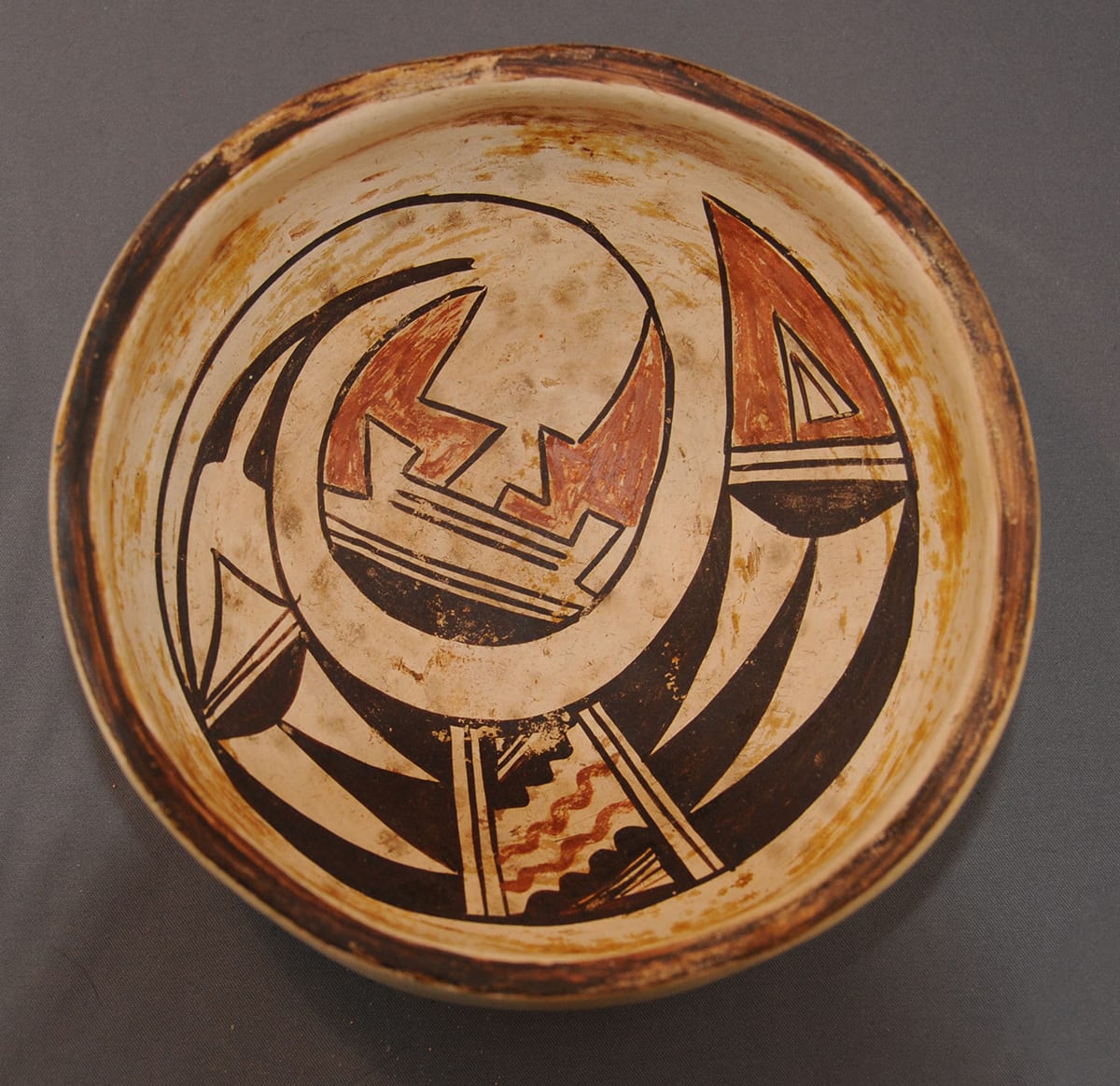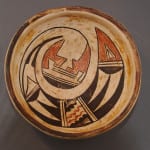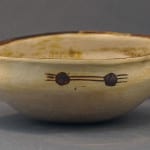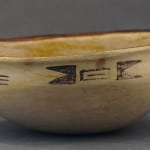This is a curious bowl with both an unusual shape for a First Mesa pot and an unusual design.
The bowl extends upward from its base forming a conical shape, and then extends vertically to the lip. This vertical section is less than an inch tall, but it turns inward and then everts outward, forming an indentation around the mouth of the bowl. This is an historic shape for the Tewa pueblos of the Rio Grande, but is unusual at Hopi. (See Harlow 1973:162, Figs. A & B.) A smooth, white slip appears to have been applied to the clay body.
There is a monochromatic exterior glyph design and a polychromatic interior design, with the exterior design much more casually painted than the interior—a pattern also seen on prehistoric Jeddito bowls (LeBlanc & Henderson 2009). The lip of the bowl is painted black.
The exterior glyph consists of two designs, each repeated twice and evenly-spaced around the circumference of the bowl in the indented area near the lip. The first design is simply two solid black circles separated by about one inch and connected by two parallel lines. Emerging from the opposite sides of the circles are three thin, parallel lines. The image of a circle with emerging parallel lines is often taken to represent nakwakwoci or prayer offerings, or (similarly) fertility or rain, as indicated by the spherical forms and tassels on a maiden’s sash (Fewkes 1919:241 and plate 78). The second exterior design is composed of two elements: the first is a toothed pattern formed by two triangles joined and is interpreted by Stephen as a squash bud—also a germinative image (Patterson 1994:225). A pair of these angular forms flanks the second element, a rectangular with an imbedded line. Sometimes squares and rectangles are used to indicate shrines, but of course, I have no direct evidence of the painter’s intention and all this is only speculation.
The interior design is an avian figure with a wide neck and body area that narrows toward the pointed tail. At the base of the tail, a single line emerges from the avian form, extends past the tip of the tail, and forms the outer line of a second image. This second form is roughly egg-shaped with an open end. Again–of course—I have no direct knowledge of the artist’s intention, but I have the strong impression I am looking at a mother attached by a placenta to its offspring. It is a sweet and protective image, so I have titled this my “chick and egg” bowl. Avian designs are standard on Hopi and Hopi-Tewa pots, but I have not seen the placenta/egg iconography before.
There seems to be a brown film over much of the interior design. I used acetone to try to remove this film but even some scrubbing with the solvent seems to have only lightened and removed part of the stain. I suspect that the discoloration may be the result of a firing incident and so I have not tried repeated applications of acetone.
I showed this small bowl to Ed Wade in his home on March 31, 2013 and he commented on the particular Tewa shape, as discussed above. It was his opinion that Nampeyo formed the pot and that it was probably painted by a young Annie. While I am certainly impressed by Ed’s knowledge, I can find no similar design that I can attribute to either Annie or her mother. Kramer (1996:179) indicates that Nampeyo made bowls with everted rims before 1900, and there is a bowl by Nampeyo with such a rim in the collection (1996-05), but I do not consider that sufficient evidence to attribute bowl 2013-04.







